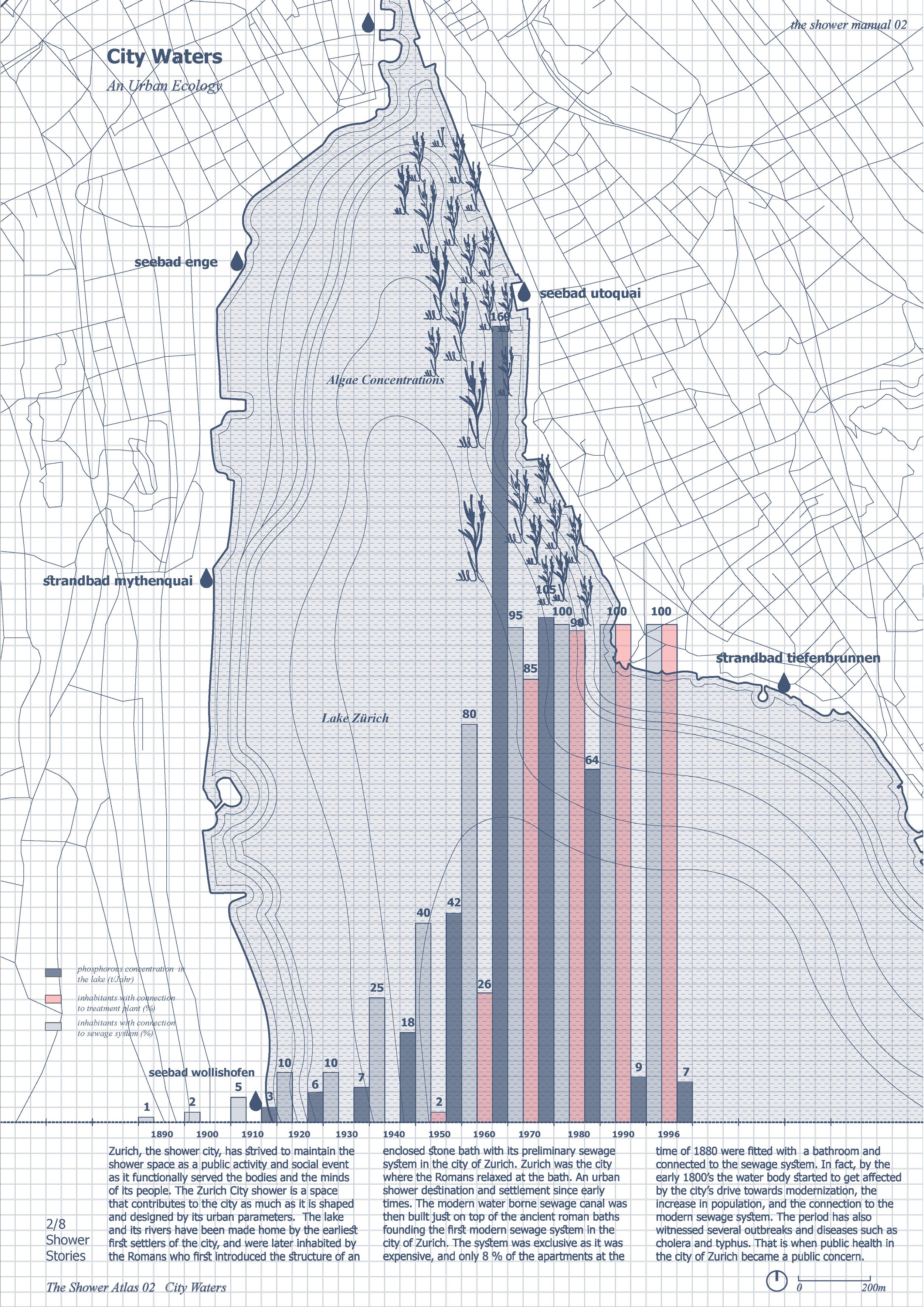city waters
Zurich, the shower city, has strived to maintain the shower space as a public activity and social event as public bathing functionally served the bodies and the minds of its people. Bathing in a 21st century river that runs through the infrastructure of a contemporary city is quite rare to find. The Zurich city shower is a space that contributes to the city as much as it is shaped and designed by its urban parameters. The lake and its rivers have been made home by the earliest first settlers of the city, and were later inhabited by the Romans who first introduced the structure of an enclosed stone bath with its preliminary sewage system in the city of Zurich (Stadt Zurich 1). Zurich was the city where the Romans relaxed at the bath (Katrin 1). An urban shower destination and settlement since early times. While it was a small space designed by the Romans in Zurich compared to their baths in Rome and other parts of the empire, it was still the largest building in the city (Chen et al. 52). Signifying importance, power, and population, the shower has always found its place in Zurich. Moreover, the modern water borne sewage canal was then built just on top of the ancient Roman baths founding the first modern sewage system in the city of Zurich (Stadt Zurich 1). The system was exclusive as it was expensive, and only 8 % of the apartments at the time of 1880 were fitted with bathroom and connected to the sewage system (Chen et al. 42). The private shower was owned by the bourgeois citizens while the masses bathed in the city’s water body. In fact, by the early 1800’s the water body starts to get affected by the city’s drive towards modernization, the increase in population, and the connection to the modern sewage system (Chen et al. 46). The period has also witnessed several outbreaks and diseases such as cholera and typhus and that is when public health in the city of Zurich became a public concern. While the shower and hygiene were highly accessible by the upper class minority of the city, they were increasingly inaccessible and polluted (the lake/city shower) to be occupied by the middle and lower classes. Hygiene became a luxury as phosphorous concentrations in the lake increased, algae multiplied on the peripheries of the waters (indicating levels of pollution) as more and more bourgeois connected to the modern invention of a sewage canal (Chen et al. 46). With the later instalment and connection to the water treatment plant on the lake, pollution levels decreased as the private showers became more accessible and the public ones shifted in use and activity.
